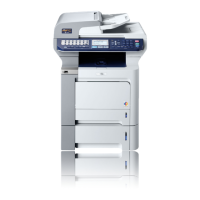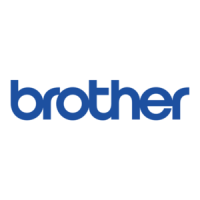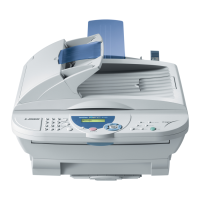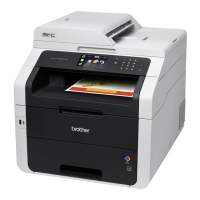12
2
2
Overview 2
Before using your Brother machine on your network, you must install the Brother software and also configure
the appropriate TCP/IP network settings on the machine itself. To do this, we recommend that you use the
automatic installer on the Brother CD-ROM as this will guide you through the software and network
installation.
If you do not wish to use the automatic installer, or you do not understand some of the terms used by the
automatic installer, refer to the remainder of this chapter for more information.
Note
If you do not wish to, or are unable to use the automatic installer or any of Brother’s software tools, you
can also use the machine’s control panel to change network settings. For more information, see Control
panel setup on page 77.
IP addresses, subnet masks and gateways 2
To use the machine in a networked TCP/IP environment, you need to configure the IP address and subnet
mask. The IP address you assign to the print server must be on the same logical network as your host
computers. If it is not, you must properly configure the subnet mask and the gateway address.
IP address 2
An IP address is a series of numbers that identifies each computer connected to a network. An IP address
consists of four numbers separated by dots. Each number is between 0 and 255.
Example: In a small network, you would normally change the final number.
192.168.1.1
, 192.168.1.2, 192.168.1.3
How the IP address is assigned to your print server: 2
If you have a DHCP/BOOTP/RARP server in your network (typically a UNIX
®
/Linux or Windows
®
2000/XP,
Windows Vista™ or Windows Server
®
2003 network) the print server will automatically obtain its IP address
from the DHCP server and register its name with any RFC 1001 and 1002-compliant dynamic name services.
Note
On smaller networks, the DHCP server may be the router.
For more information on DHCP, BOOTP and RARP, see Using DHCP to configure the IP
address on page 169, Using BOOTP to configure the IP address on page 170 and Using RARP to configure
the IP address on page 171.
Configuring your machine for a network
with an Ethernet cable connection
2

